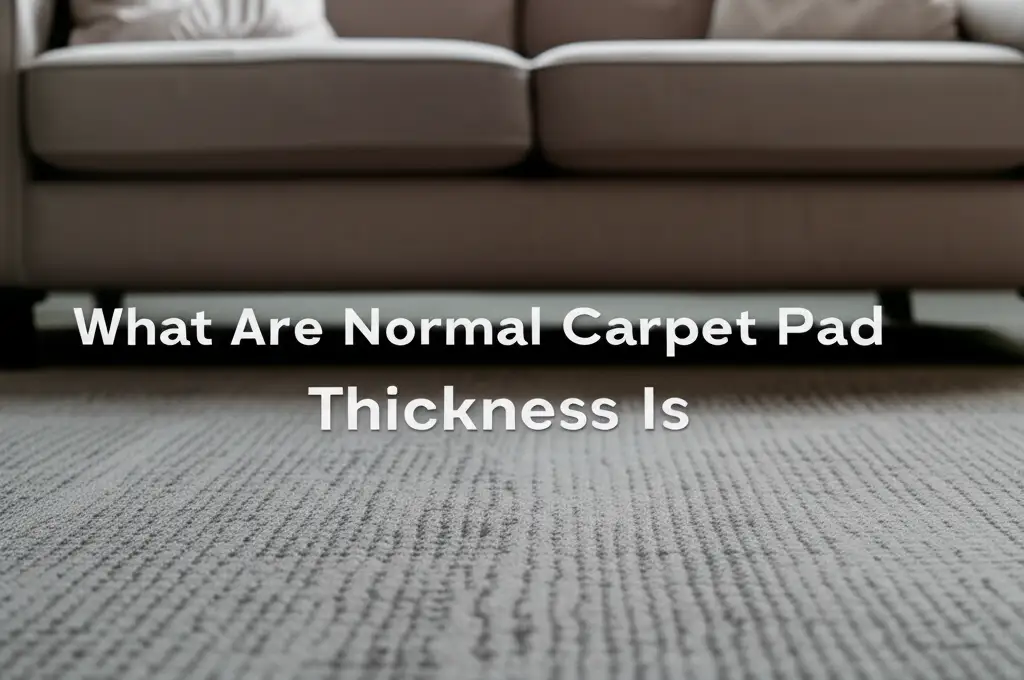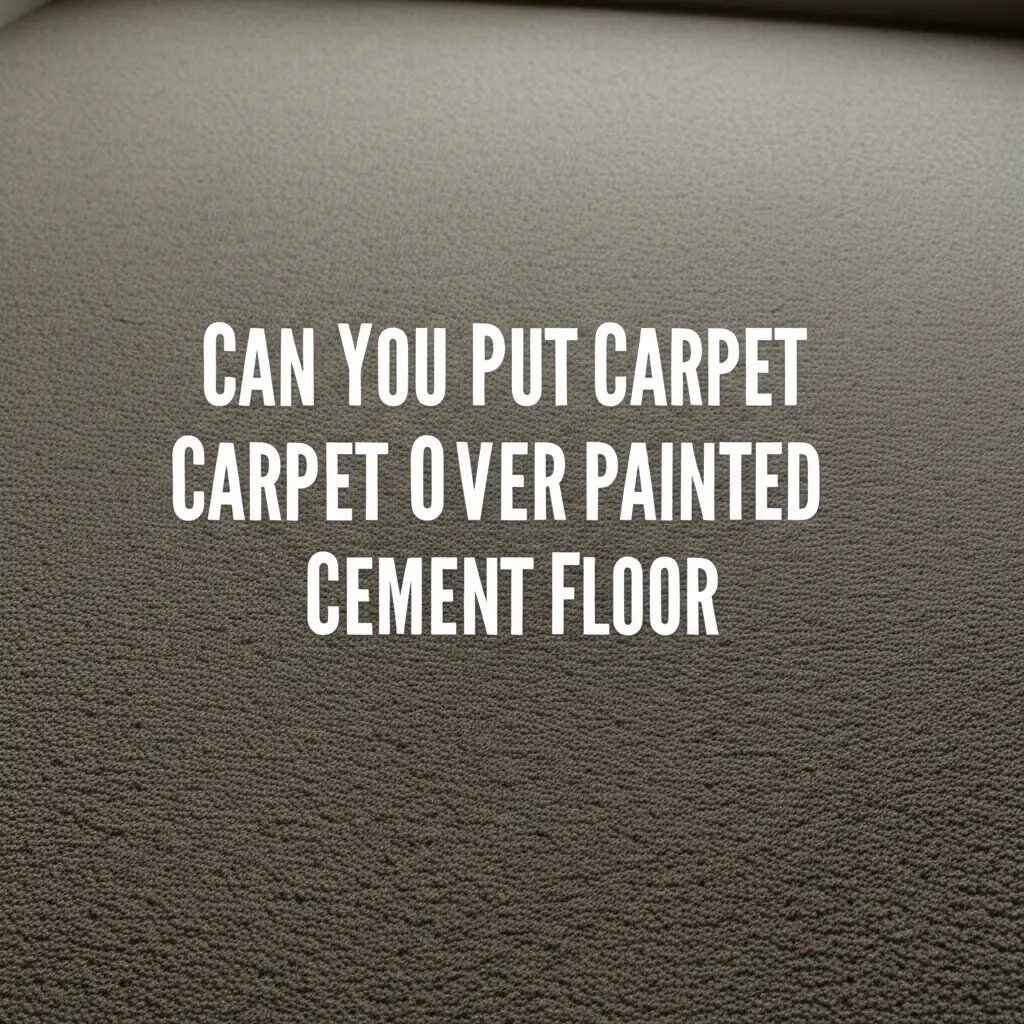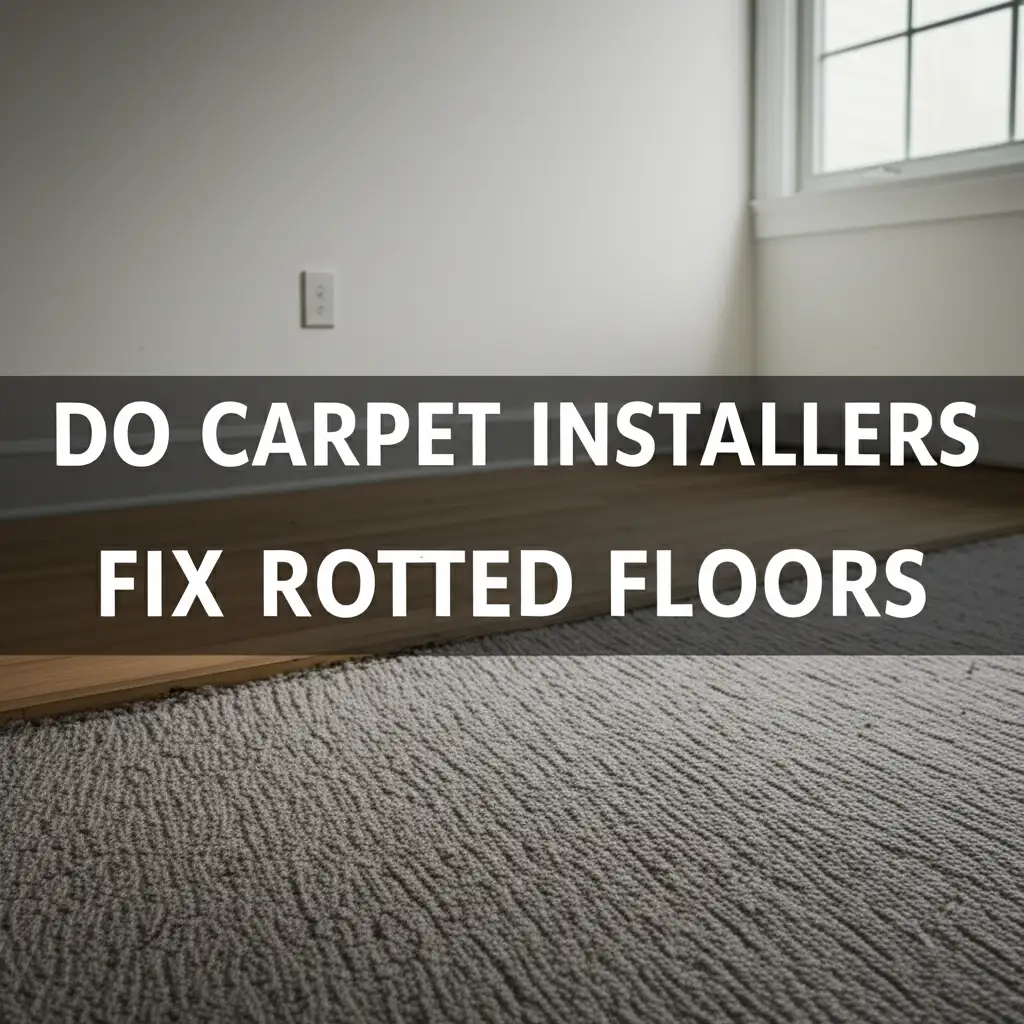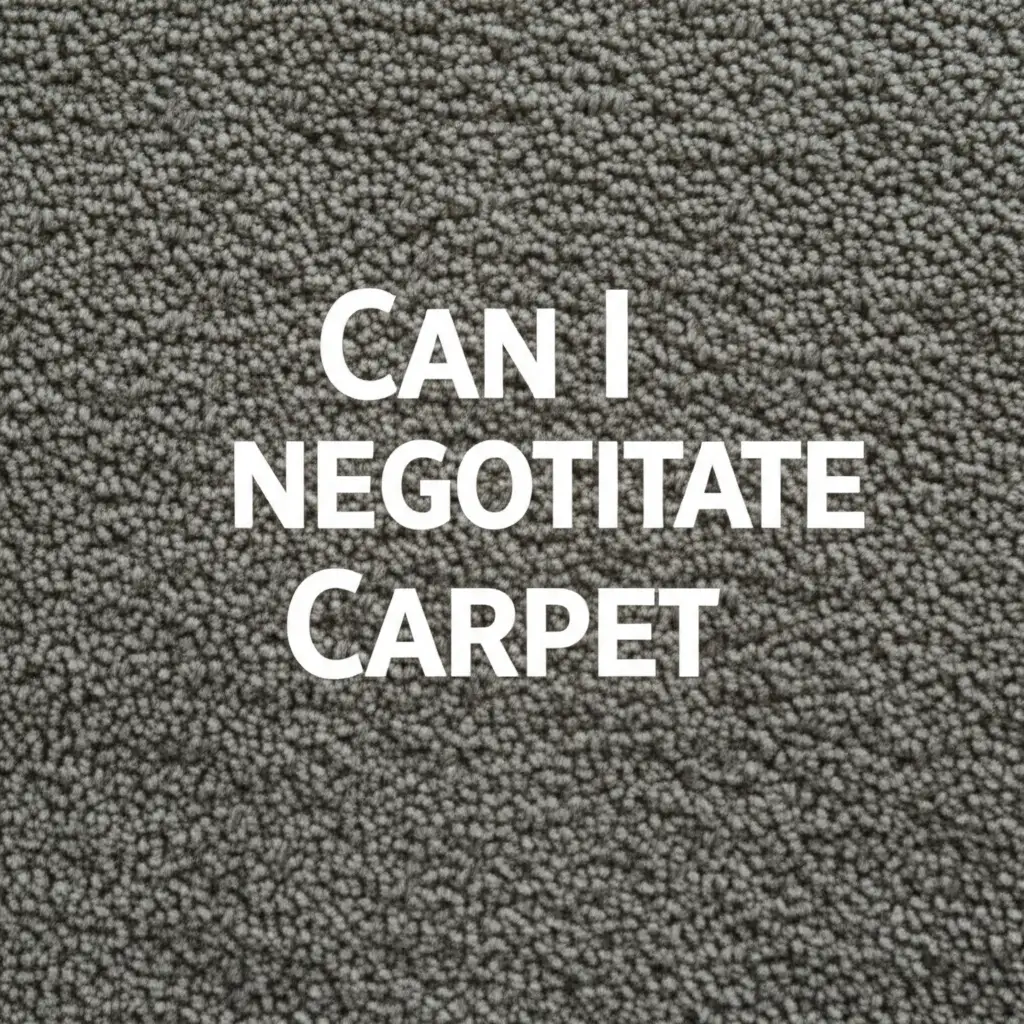· Liora Benning · Flooring · 15 min read
Did I Get The Carpet Padding I Paid For

Verify Your Carpet Padding: Did You Get What You Paid For?
You have new carpet. It looks beautiful. But a quiet worry might linger: did I get the carpet padding I paid for? This is a valid question. The padding under your carpet is very important. It affects comfort, durability, and even the life of your carpet. I want to help you understand how to check your padding. We will cover specifications, verification steps, and what to do if things look wrong.
This article gives you the tools you need. You will learn about padding types. You will also discover how to confirm its quality and type. Ensuring you receive the correct carpet padding protects your investment. It also ensures long-term comfort in your home. Let’s make sure your new carpet feels as good as it looks.
Takeaway
- Review Invoice: Compare padding specifications on your invoice with actual materials.
- Understand Specs: Learn about thickness (inches) and density (pounds/cubic foot).
- Visual Inspection: Check padding color, texture, and markings.
- Measure Thickness: Use a ruler or tape measure on an exposed edge.
- Feel Density: Compress a piece of padding to gauge its firmness.
- Ask Questions: Do not hesitate to question your installer about the padding used.
- Document Issues: Take photos and notes if you find discrepancies.
Clear Answer to the Main Query
You can verify if you received the carpet padding you paid for by checking your invoice against the actual product. Look at thickness, density, and material type. Inspect exposed edges, feel the padding, and confirm specifications before or during installation.
The Core of Your Comfort: Understanding Carpet Padding
Carpet padding is not just an optional layer. It plays a critical role in your flooring system. Think of it as the foundation for your new carpet. Good padding makes your carpet feel soft and luxurious underfoot. It also helps your carpet last much longer. Without proper padding, even the best carpet can wear out quickly.
Padding acts like a shock absorber. When you walk on your carpet, the padding takes the impact. This protects the carpet fibers from crushing and matting. It prevents wear and tear. This means your carpet keeps its good looks for many years. It prevents premature aging. Good padding also adds insulation to your home. It helps keep rooms warmer in winter and cooler in summer. This can save you money on energy bills. It makes your home more comfortable.
Beyond comfort and durability, padding also offers sound benefits. It helps to absorb noise. This creates a quieter living space. Footsteps are muffled. Sounds from adjacent rooms are reduced. This is especially good for multi-story homes. It creates a peaceful environment. So, when you choose carpet, the padding choice is just as important. It is an unseen hero that protects your investment and enhances your living. Make sure you get the right one.
Decoding Padding Specifications: Thickness, Density, and Material
Knowing your padding’s specifications is key. Your invoice should list these details. The two main specifications are thickness and density. Let’s break down what these terms mean. This helps you compare what you paid for versus what you got.
Thickness is measured in inches. Common thicknesses are 7/16 inch or 1/2 inch. Thicker padding often feels more plush. However, very thick padding (over 1/2 inch) can sometimes cause problems. It can make seams visible. It can also make doors stick. Always choose a thickness suitable for your carpet type and traffic. This ensures stability.
Density is measured in pounds per cubic foot (lbs/cu. ft.). This number tells you how firm the padding is. A higher density means the padding is firmer and will last longer. For residential use, common densities range from 6 lb to 8 lb. Some heavy-duty applications might use 10 lb padding. A 6 lb density means one cubic foot of that padding weighs 6 pounds. Higher density padding provides better support for your carpet. It resists compression more effectively. This prolongs your carpet’s life. It prevents it from looking flat or worn out too soon.
Padding material is also important. The most common type is urethane foam. This foam comes in various forms, like bonded urethane (re-bond), prime urethane, and frothed urethane. Bonded urethane, or re-bond, is made from recycled foam scraps. It is multi-colored and very popular. Prime urethane is a solid piece of foam. It offers consistent feel and performance. Frothed urethane is a dense, high-quality option. Other materials include rubber padding or felt padding. Rubber is very dense and durable. Felt padding is often used for commercial applications. Each material has different properties. Each offers varying levels of comfort, durability, and cost. Understanding these specs helps you verify your purchase.
On-Site Verification: Checking Your Padding Before Installation
The best time to verify your carpet padding is before it gets installed. This is your chance to see the actual product. Your installer should bring the padding to your home. Take this opportunity to check it. Do not be afraid to ask questions. You are paying for a specific product. You have a right to confirm it.
First, locate the padding rolls. They usually come wrapped in plastic. Ask the installer to unroll a small section. This lets you inspect the material. Compare the padding you see with the sample you chose. Look at the color, texture, and overall appearance. Bonded urethane, for example, has a distinct multi-colored look. If you ordered a solid prime foam, it should not be multi-colored. Pay attention to these visual cues. They can tell you a lot about the padding type.
Next, look for labels or markings on the padding itself. Many manufacturers print specifications directly on the padding. This might include the brand name, thickness, and density. Take a moment to read these labels. Match them against your sales invoice or contract. Does the label say 8 lb density if you paid for 8 lb? Does it say 7/16 inch if you paid for that thickness? If the numbers do not match, ask your installer for clarification immediately. This direct comparison is a strong way to verify your purchase.
You can also do a quick feel test. Take a small piece of padding, if available. Try to compress it with your hand. A higher density padding will feel firmer and offer more resistance. A lower density padding will compress more easily. While this is not a precise measurement, it gives you a general idea of the density. It helps you understand if the padding feels like what you expected. These simple checks before installation can prevent bigger problems later.
During and After Installation: Spotting Padding Discrepancies
Checking the carpet padding during installation can also reveal issues. Installers cut and lay padding before the carpet goes down. This is another opportunity for you to observe. Watch how the padding looks and feels. If you notice anything unusual, speak up right away. This is easier to fix than after the carpet is fully installed.
During installation, you can sometimes see the padding edges. This allows for a more accurate measurement. Use a tape measure or a small ruler. Measure the thickness of the padding at an exposed edge. Compare this measurement to the thickness listed on your invoice. If you paid for 1/2 inch padding, but it measures closer to 3/8 inch, this is a discrepancy. Make sure your measurements are accurate. Also, look at the consistency of the padding. Does it look uniform? Are there any visible defects or thin spots? The padding should lay flat and smooth.
After installation, it is harder to check the padding. But you can still do a few things. Walk on your new carpet. Pay attention to how it feels underfoot. Does it feel as plush and supportive as you expected? If the carpet feels too soft, too hard, or squishy, it might indicate an issue with the padding’s density or thickness. For example, if it feels unusually firm, it might be a lower quality, very thin padding. If it feels too soft, it might be too thick or low density for your carpet.
Sometimes, if you pull back a small section of carpet near a wall or in a closet, you might get a peek at the padding. This is not always easy or advisable without professional help. But if you suspect a major problem, this might be a last resort check. You can also press down firmly on the carpet. Pay attention to how much it compresses. Then feel how quickly it springs back. Quality padding should offer good rebound. If it stays compressed, the density might be too low. This quick rebound test helps you gauge the padding’s performance.
Common Padding Problems: Are You Getting Less Than You Paid For?
Unfortunately, some homeowners face issues with their carpet padding. It is important to know what these common problems are. This helps you identify them if they happen to you. Understanding these issues protects you from paying for a premium product and receiving a cheaper alternative.
One common problem is substitution of a lower-density padding. You might pay for an 8 lb density padding. The installer might use a 6 lb or even 4 lb density instead. Lower density padding is cheaper. It will not last as long. Your carpet will also wear out faster. It offers less support. This can lead to carpet fibers crushing quickly. Visually, it can be hard to tell the difference once installed. But the feel will be different. The carpet will not feel as resilient. It may flatten sooner than expected.
Another issue is incorrect thickness. You might have ordered 1/2 inch padding. The installer might use 7/16 inch or 3/8 inch padding. While this difference might seem small, it affects comfort and durability. Thinner padding offers less cushioning. It also provides less protection for your carpet’s backing. This can lead to premature wear. It impacts the plushness. The carpet might feel harder underfoot. It may not absorb sound as well.
Sometimes, installers might use used or damaged padding. This is rare but does happen. Used padding has already lost some of its resilience. It will not provide the support your new carpet needs. Damaged padding, like padding with tears or uneven sections, can create lumps under your carpet. These issues compromise the look and feel of your flooring. They also reduce its lifespan. Always check for new, uniform padding rolls. If you spot old or damaged padding, refuse it immediately. It should be pristine.
Finally, there is the issue of padding simply not meeting the specified material type. If you paid for a high-quality prime urethane foam, but receive multi-colored re-bond foam, that is a problem. While re-bond is a good option, it is usually less expensive than prime foam. Different materials have different performance characteristics. Ensure the material matches your invoice. Being aware of these issues helps you advocate for yourself. It ensures you get the carpet padding you paid for.
Steps to Take When Padding Doesn’t Match Expectations
You have checked your padding. You suspect it is not what you paid for. What should you do next? Taking the right steps is crucial. This helps you resolve the issue fairly. Do not panic, but act promptly.
First, document everything. Take clear photos of the padding. Photograph any labels or markings you find. Note down the thickness you measured. Write down the date and time of your observations. Keep your original invoice and contract handy. This documentation gives you strong evidence. It backs up your claim. Accurate records are your best friend in such situations.
Second, communicate with your carpet retailer or installer. Do this in writing, if possible. An email is better than a phone call. State your concerns clearly and calmly. Refer to your invoice and the discrepancies you found. Provide your documentation. Request an explanation and a solution. Give them a chance to correct the error. Most reputable companies want to maintain good customer relations. They will work to fix the problem. Be polite but firm.
Third, understand your options. The retailer might offer several solutions. They might replace the padding with the correct type. They might offer a partial refund for the difference in cost. Or they might redo the entire installation with the correct padding. Discuss these options. Choose the one that best compensates you for the discrepancy. Sometimes, replacing the padding means reinstalling the carpet. This can be a big job. If you paid less, a refund might be an acceptable compromise.
If communication fails, you might need to escalate the issue. This could involve contacting consumer protection agencies. You might also consider a formal complaint or mediation. Small claims court is an option for significant disputes. Before taking legal action, always try to resolve it directly. A strong paper trail helps your case. Remember, you paid for a specific product. You deserve to receive it. Persistence and clear communication often lead to a good outcome.
The Long-Term Benefits of Proper Carpet Padding
Getting the correct carpet padding is not just about avoiding fraud. It is about securing numerous long-term benefits for your home and your investment. The small effort you put into verification now pays off for years. It ensures your carpet performs at its best.
One primary benefit is extended carpet lifespan. Proper padding reduces wear and tear on your carpet fibers. It prevents crushing. This means your carpet looks newer for a longer time. You will not need to replace your carpet as often. This saves you money in the long run. Good padding protects the carpet backing. It absorbs shock. This keeps the carpet from breaking down. This is a significant economic benefit.
Another important advantage is enhanced comfort and feel. The right padding makes your carpet feel softer and more luxurious. It provides a comfortable surface for walking, sitting, and playing. This improved comfort adds to your daily enjoyment of your home. It creates a pleasant environment. The feeling of plushness underfoot contributes to a cozy atmosphere. It transforms a room.
Proper padding also contributes to better indoor acoustics. It acts as a sound barrier. It helps to absorb foot traffic noise. It also reduces sound transfer between floors. This makes your home quieter. It creates a more peaceful living space. If you have a multi-story home, or if you live in a noisy area, this sound absorption is a huge benefit. It adds to your home’s tranquility. You will notice the difference.
Finally, appropriate padding provides improved thermal insulation. It adds an extra layer of insulation between your floor and the subfloor. This helps regulate room temperature. It keeps heat in during winter and cool air in during summer. This can lead to lower energy bills. It makes your home more energy efficient. The right carpet padding is a smart choice for your wallet and the environment. It is an investment that truly gives back.
FAQ Section
Q1: How can I tell what density my carpet padding is after installation?
A1: After installation, it is hard to measure exact density. You can feel the carpet’s firmness. A very firm carpet might have high-density padding. A very soft, easily compressible carpet might have low-density padding. The best way is to check the padding before or during installation if any edges are exposed.
Q2: What is the ideal thickness for carpet padding?
A2: The ideal thickness depends on your carpet type and traffic. For most residential carpets, 7/16 inch or 1/2 inch padding works well. Very thick padding (over 1/2 inch) can be too soft. It can cause carpet buckling. Always match padding thickness to the carpet manufacturer’s recommendation.
Q3: Can I replace my carpet padding without replacing the carpet?
A3: Yes, you can replace carpet padding without replacing the carpet. An installer will carefully lift the carpet. They remove the old padding. Then they install new padding. Finally, they re-stretch and re-lay the existing carpet. This is a good option if your carpet is in good shape but the padding has worn out.
Q4: Does padding affect my carpet’s warranty?
A4: Yes, carpet manufacturers often require specific padding types for their warranties to be valid. Using incorrect padding can void your carpet’s warranty. Always check the carpet manufacturer’s guidelines. Ensure your chosen padding meets their density and thickness requirements. This protects your investment.
Q5: What is the difference between prime urethane and re-bond padding?
A5: Prime urethane padding is a solid block of foam. It is made from new materials. It offers consistent performance. Re-bond padding is made from recycled foam scraps. It appears multi-colored. Re-bond is often more affordable. Both can be good choices, but prime urethane is generally considered higher quality.
Conclusion
The question, “Did I get the carpet padding I paid for?” is very important. Your carpet padding is a major part of your flooring investment. It impacts how your carpet feels. It also greatly affects how long your carpet lasts. We have explored why proper padding matters. We also covered how to check its specifications. You now understand how to verify the padding before, during, and after installation. Knowing common issues helps you identify problems early.
Taking steps to verify your carpet padding empowers you. You can ensure you receive the quality product you paid for. This protects your home’s comfort and your financial investment. Do not hesitate to ask questions. Document everything. Be proactive. Your new carpet should provide comfort and beauty for many years. Ensure its unseen foundation is exactly what you expected. Enjoy your cozy and well-supported new flooring!





